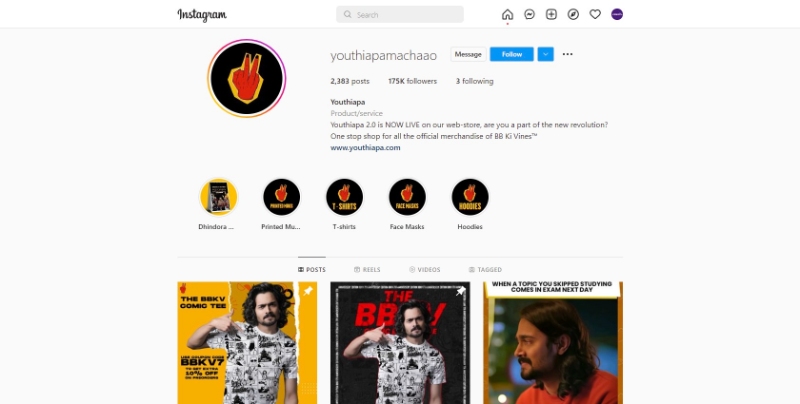It's useful to keep an eye on the current industry and influencer marketing trends as you prepare your forthcoming influencer initiatives.
How does Instagram help creators? Why are so many people collaborating with micro-influencers? Is it worthwhile to invest in vertical video?
With our top influencer marketing trends to watch in 2022, we'll cover all of this and more.
Keep an Eye on These Influencer Marketing Trends
Here are seven things to keep an eye on, ranging from Instagram and TikTok releasing new creative capabilities to increasing transparency regarding diversity:
1. Nano- and micro-influencers are on the rise.
Nano and micro-influencers have extremely restricted groups that marketers can connect to, making their product recommendations appear to come from a friend or trusted confidante.

Nano and Micro-influencers, despite not having large followings, have a robust social presence, with up to 1000k of reach per post.
2. A Shift in Video Content Collaborations
Vertical video is quickly becoming the must-have format for influencer marketing, thanks to the growing popularity of TikTok and Instagram Reels.
In other words, in 2022, video content will be king.

Tips for a good Instagram video/reel
- You can upload videos with aspect ratios ranging from 1.91:1 to 9:16.
- A minimum frame rate of 30 FPS (frames per second) and a minimum resolution of 720 pixels are required in videos.
- Videos with a duration of fewer than 10 minutes are limited to a file size of 650MB.
3. Influencers Who Became Entrepreneurs
The formation of full-fledged entrepreneurs is a trend we're seeing more and more in the influencer marketing industry. While being an influencer is a full-time job in and of itself, we're discussing creators who have converted their popularity into a company.

Bhuvan Bam has come a long way from being a small-time YouTube producer to portraying odd characters on BB Ki Vines. Along the way, he has captivated the Indian internet's imagination. He's become one of the most prominent video creators in the country, with 25.1 million YouTube subscribers and 14.1 million Instagram followers.
With the launch of Youthiapa, which he co-founded with his friend Arvin Bhandari in 2017, Bam made his first venture into the D2C market. Youthiapa began as a merchandise-based business with products based on the comedian's popular one-liners but has since evolved into everyday fashion for a wider audience.
4. Authenticity Takes Priority Over Perfection
On social media, authenticity is one of the most efficient methods to develop a digital community, and it's also becoming a big influencer marketing trend.
Creators are opting to publish less filtered and more in-the-moment photographs of their lives, rather than the flawlessly maintained feed look.

So, how does this affect brands?
Collaborate with influencers who know how to make non-advertising ads and sponsored content. To put it another way, don't stress too much over finding influencers with the "ideal" look. Instead, pay attention to the artists who build genuine connections with their audience and provide useful original material.
5. A Fresh Look at Diversity and Inclusion
The rise in social activity in 2020 brought attention to the industry's lack of diversity.
Numerous creators spoke out about the need for more representation in influencer marketing after many firms were called out for tokenism and unequal remuneration.
While we acknowledge that diversity and inclusion should not be considered a "trend," we believe (and hope) that they will become the norm in the future. Working with a wide group of influencers isn't enough; your company's internal culture is also important.
6. More Partnerships & Collaborations in the Works
This trend has already caught our attention, and we believe it will continue in 2022!
Rather than a one-time post or video, influencers will seek out brands to collaborate with on a more regular basis.
Both parties benefit from investing in a long-term partnership. It not only builds trust with the influencer's audience but also adds validity. It will also increase sales!
Conversations on User Generated Content (UGC) and Crediting
Over 86 percent of businesses, according to Forbes, use user-generated content (UGC) as part of their marketing strategy. And it's not without reason.
UGC is more trustworthy than branded advertising, may help develop product reputation, and is excellent for creating a feed full of beautiful material. However, the legality of reposting UGC remains a fuzzy topic, and we believe the discourse will shift in 2022.
We'll keep a watch on whether this trend takes up, but always get permission before reposting a photo, tag the creator, and credit them in the caption (whether it's at the beginning or finish).
For years to come, we may expect to see new, inventive influencer marketing trends in the sector - keep an eye on it!
Managing influencer campaigns
Branded content or working with creators, also known as influencer marketing, is an excellent way to increase your brand's reach on social media. Almost all businesses can achieve success with this strategy with the right planning and research, but there is no one-size-fits-all approach. Here are some tips to make your social media influencer program work.
How to manage an influencer marketing campaign effectively?
But remember, you're a marketer, not an accountant. Shift to smarter influencer payments with our Bulk payment tool. Pay thousands of influencers at a time and focus on building your brand.






